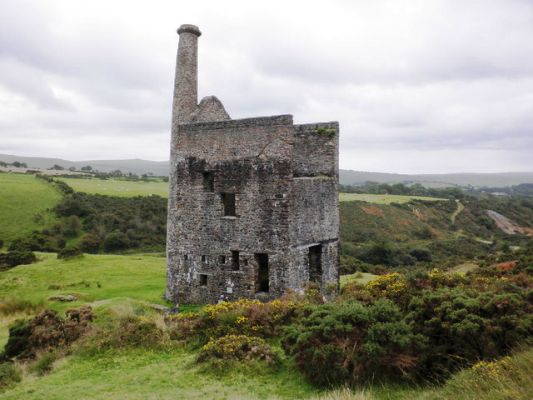
Wheal Betsy
© Copyright Roger Cornfoot and licensed for reuse under this Creative Commons Licence
This engine house at Job’s Shaft was built in 1868 to house a Cornish beam engine to pump water from the mine.
Mining at Wheal Betsy stated sometime in the first half of the 1700s and continued towards the end of the 18th century when work stopped.
The mine was reopened in 1816 and over the period 1821-1832 produced Silver and Lead to a value of £102,661.
Water was a major problem faced by the mine. In 1835 the adit of the nearby Wheal Friendship mine, worked by the same company, was driven to dewater Wheal Betsy down to the 40 fathom level. By 1837 the two companies had divided into separate entities.
In 1842 the mine was equipped with four over-shot waterwheels which were used for pumping water, hoisting and crushing the lead ore. However by 1846 the mine was making a loss once more and was abandoned.
In 1863 a new company took over the mine and invested money in a lot of new equipment, but by 1866 it was realised that the mine production had not covered the cost of this.
By 1868 the mine was employing 128 men and the steam pumping engine house was built; it must be assumed that they decided to invest some more capital in equipment. However this appears to have been unsuccessful as in 1869 the mine passed to another company, who worked it on a reduced scale until it finally closed in 1877.
Today, the engine house, at Job’s shaft, is the last standing example on Dartmoor. In 1954 when the Army was given permission to demolish it, but luckily it was saved by the intervention of A.K. Hamilton Jenkin and other campaigners and is now a National Trust property.
Return to previous page
